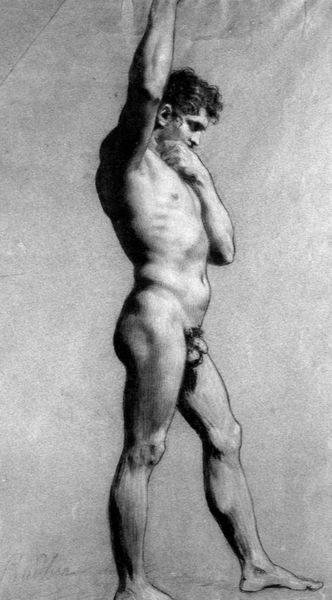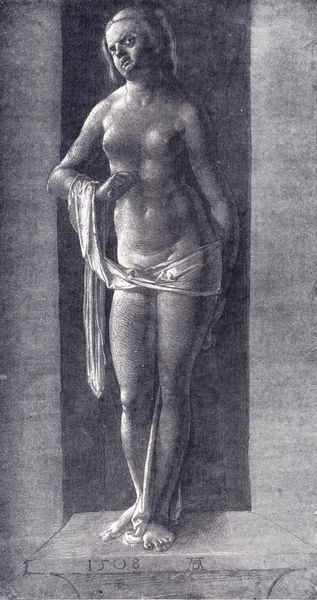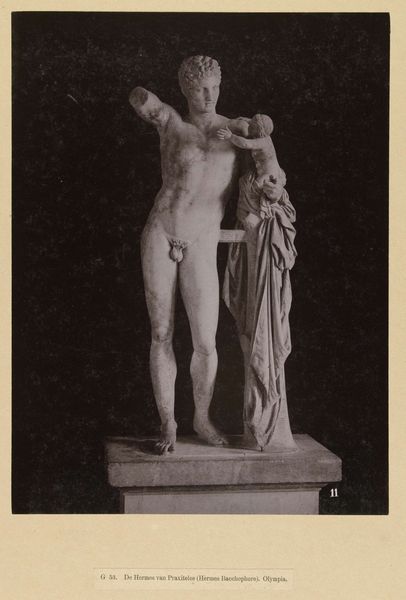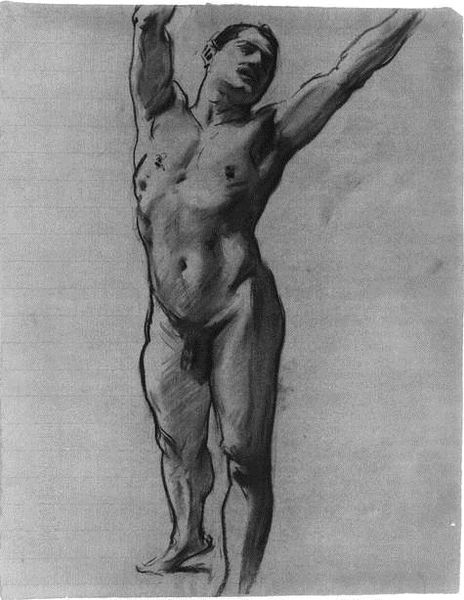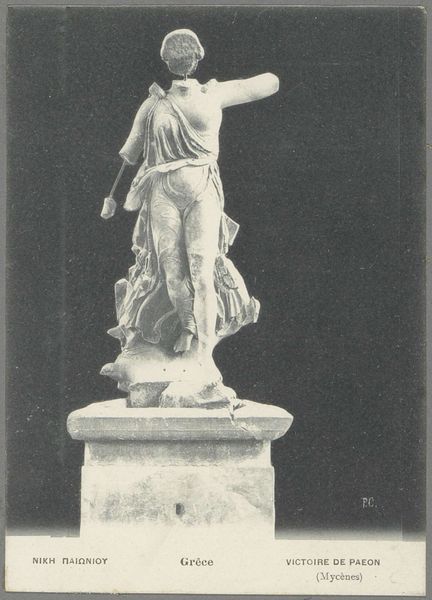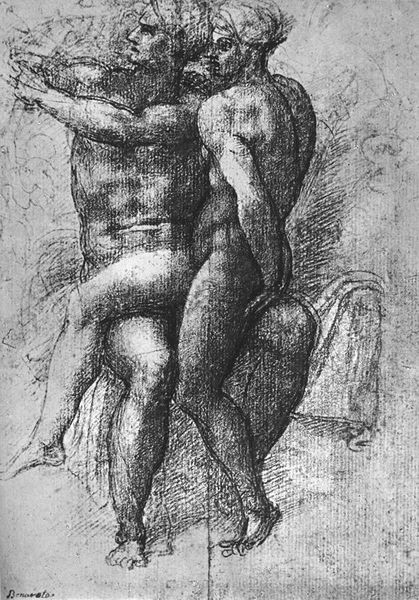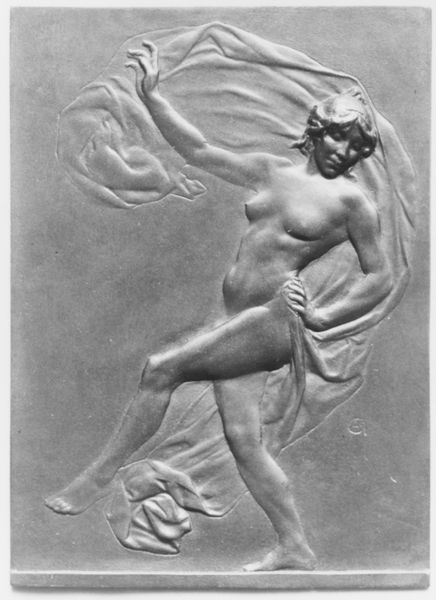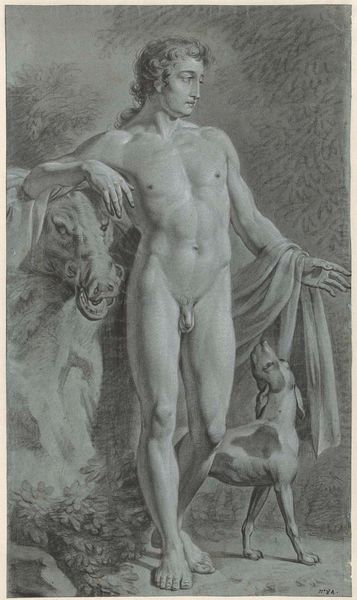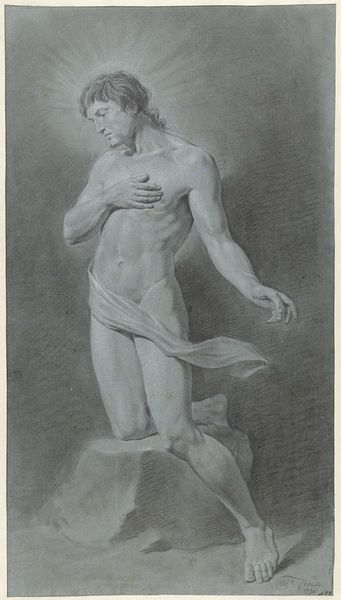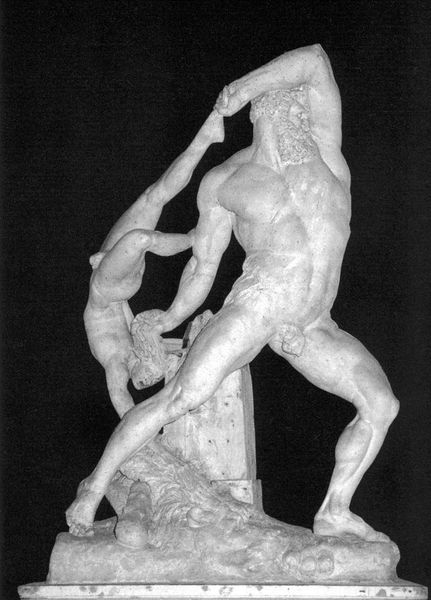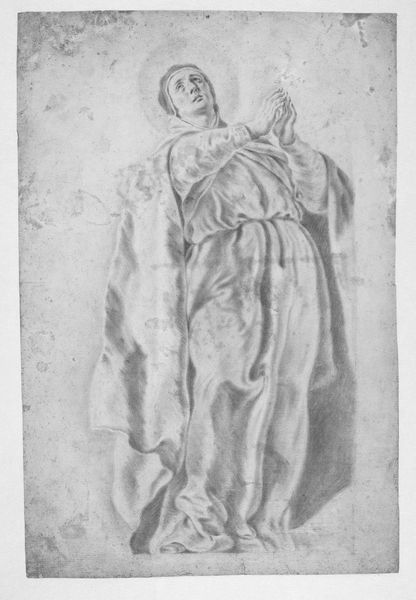
drawing, pencil, graphite
#
drawing
#
portrait image
#
classical-realism
#
charcoal drawing
#
figuration
#
form
#
ancient-mediterranean
#
black and white
#
pencil
#
line
#
graphite
#
academic-art
#
graphite
Copyright: Public domain
Curator: Here we have "Hermes," a drawing created around 1892 by Konstantin Bogaevsky. Executed with pencil and graphite, it captures a classical, academic aesthetic. My initial impression is its sheer monumentality, achieved through incredibly precise line work and shading in monochrome. Editor: The high contrast definitely lends itself to the striking composition, and what appears to be an ancient statue in its monochrome portrayal, could represent idealized forms of masculinity and a visual validation of certain societal ideals of power. What more can you tell me? Curator: Bogaevsky studied at the Academy in St. Petersburg, heavily influenced by classical art. His training in draughtsmanship and academic conventions is fully apparent. The precise depiction of the anatomical detail reminds me of the academic exercises of that time when artists strove to render forms with photographic accuracy to better understand them. Editor: It does remind me of that era in which art served particular cultural roles; its beauty standards linked inextricably with power structures and reinforcing of particular historical and aesthetic norms. And though we acknowledge and can find a technical skill and refined classical sensibilities, how do we deal with the inherent issues when such idealized representations tend to exclude different identities and marginalize lived experiences that fall outside them? Curator: Absolutely, and that is something we must grapple with! The Academy held considerable power in shaping artistic canons and legacies which in turn legitimized very specific historical views of beauty and order. We can contextualize "Hermes" not only as a demonstration of artistic prowess but also an artefact shaped by those socio-political expectations of its period. Editor: By viewing art in its complex dimensions we are hopefully beginning to question these power dynamics that persist even to the present. Thank you! Curator: It has been my pleasure! The intersection of artistry and social context keeps things interesting.
Comments
No comments
Be the first to comment and join the conversation on the ultimate creative platform.
